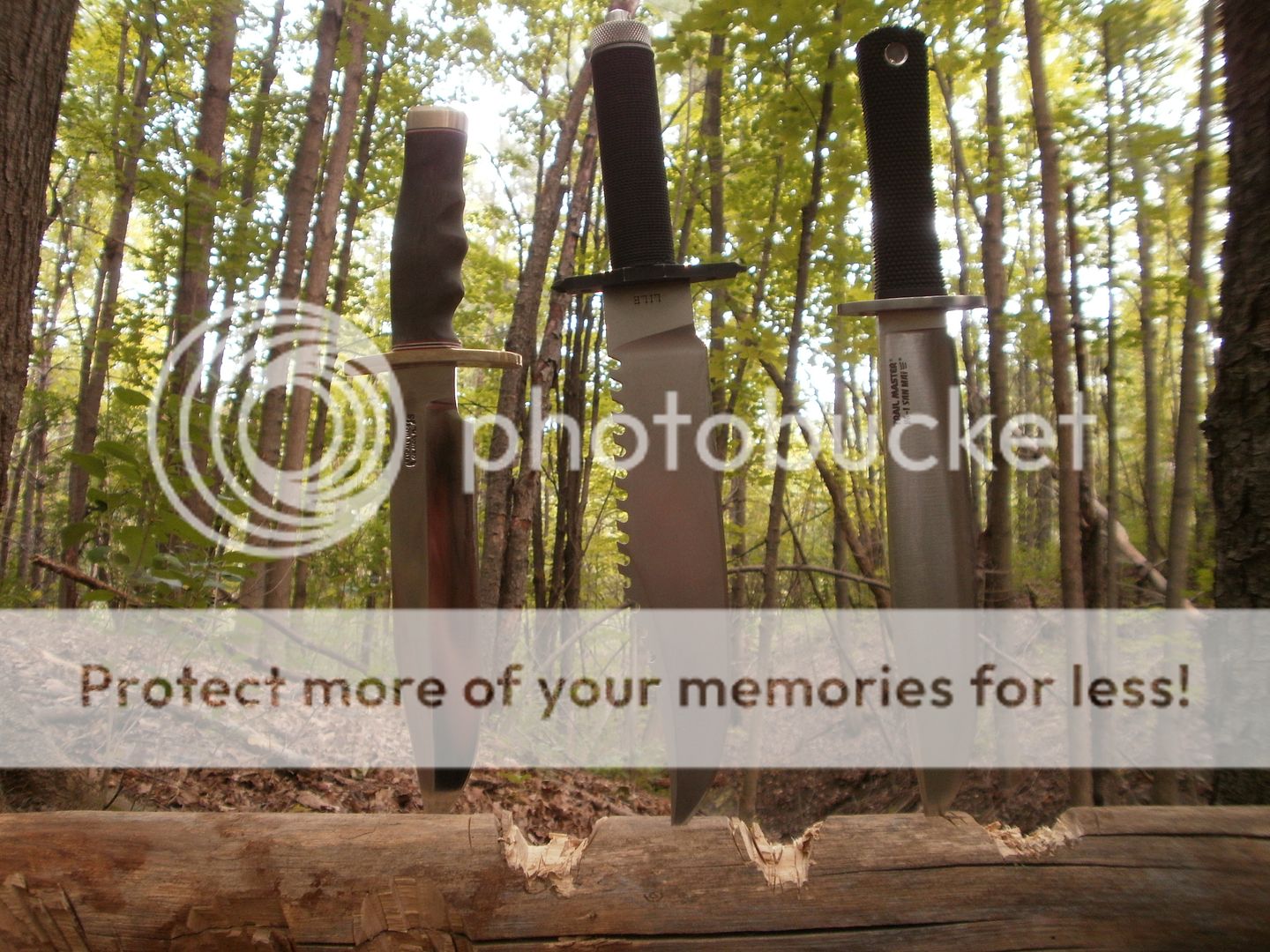The edge on the SA9 is 0.060" behind the edge. To give a perspective, a typical big Randall will be
1/3rd of that...
Let's just say this edge is a couple of ticks beyond heavy-duty pry bar level... Even an old thick-edge TOPS knife will be green with envy...
The Neeley SA's handle is not secured against vibration, so it will come loose rapidly, and start unscrewing itself... On mine this happened in just few chops, in part because of my temporarily losing the buttcap O-ring, and just chopping with the naked buttcap screwed tight: Once loosened, something serious will need to be done to secure the tube handle, as the handle just gets looser and looser: Maybe some kind of thread adhesive will do the trick.
The chopping performance was surprisingly high once the edge was brought down to around 15-17 degrees per side, which for me is very thick, as all my other knives are easier to thin to 12 degrees per side.
Even at a blunt angle, the amount of metal that has to be removed to get even 30-34 inclusive is extraordinarily high. I did this by hand so there was no temper loss through raised metal temperature: Despite this extra care, the resulting edge had extremely poor edge-holding, and what you see below happened in about 30 chops on Maple: Note the extreme amount of metal that had to be removed to reach even this moderate angle:
The original edge was around 60-70 degrees inclusive, which is close to a 90 degree square corner...: Hardly a knife at all...
The SA9 was the most finely made knife I have ever seen in terms of symmetry/surface precision. The hollow grind and compound curve plunge line unfortunately make it a very problematic knife to have the blade re-ground thinner into a useable edge, at least not without huge cosmetic changes...
Handle capacity is large and sheath design excellent.
Of note is that the Neeley-made Lile designed knives are made with similarly thick 0.060" edges as the SA series, while the original pre-dot Liles ranged from 0.040" on my Sly II to 0.028" on my "Mission".
0.060" means they are basically intended as wall hangers, but this can't be the intention for the SA series. If the SA were flat ground like the Lile designs, they could be easily fixed by professional sharpeners, but complex hollow grinds like the SAs are much more difficult to thin: All you can easily do is raise an enormous edge bevel to make them marginally useable...
I find flat ground knives work better with round handles, as they reduce any tendency for the blade to roll while chopping: This is not a huge deal in practical terms, as being careful can prevent rolling, even with a hollow grind, but the tendency is more acute with a narrow blade like on the Neeley SA or Chris Reeve one-piece series...: "Locking" the grip against rolling around an hexagonal shaped guard is also easier than on oval or small guards like the Reeve models...
Because of the very poor edge-holding, and extremely thick edge, I would not recommend the SA series. But if you come across one that holds it edge, and know a sharpener that can do miracles, and know of a glue or method to secure the handle, they have some nice design features...
The one hollow handle currently made I would recommend today as useable out of the box would be the Randall Model 18, owing the thin edge and excellent edge holding. But it has poor blade mass and is not what I consider a real "shelter builder": The Randall Model 12/with 14 grind, with a sheath pouch, is a better choice.
The Liles are the best ones out there, especially with their excellent edge holding, the best design being the "Mission". In addition, they combine correctly flat grinds and hexagonal guards, but the surface finish is slightly uneven, and they could use a re-grind to improve their surfaces, if only cosmetically...
The Parrish is probably one of the better ones out there, but is a bit small to chop.
My favourites are the Colin Cox models for their thin edges, but they have oddball shapes (the "sawback" being quite useful, but only to chop through knots!). Voorhis makes some very strong models, very similar to Liles, but they are in 5160 Carbon, and have poor sheaths.
Gaston





